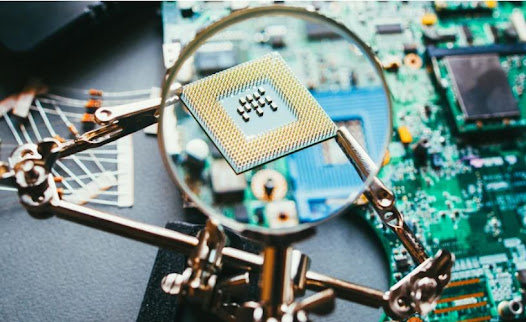Understanding PCB Substrates
At its core, a PCB substrate is the foundational layer that supports and electrically connects various components of a circuit. It's not just a physical base but an integral part of the circuit's functionality, influencing its electrical properties and reliability. Common materials used as substrates include fiberglass, ceramics, and various composite materials, each offering distinct properties that cater to specific requirements.
The substrate's role in a PCB extends beyond mere support – it affects the board's thermal management, electrical performance, and mechanical stability. In high-performance applications, where the margins for error are minimal, the choice of substrate can be the difference between optimal functionality and failure.
Factors to Consider When Selecting a Substrate
Selecting the right substrate for a high-performance PCB involves a multifaceted analysis of the following factors:
Thermal Conductivity: High-performance PCBs often generate significant heat and require substrates with excellent thermal conductivity to dissipate this heat efficiently, thereby preventing overheating and ensuring reliability.
Electrical Properties: The dielectric constant and loss tangent of the substrate material influence signal integrity and loss, especially in high-frequency applications. Selecting a material with appropriate electrical properties is crucial to maintain signal quality and circuit performance.
Mechanical Stability: Substrates must possess adequate flexural strength and dimensional stability to withstand the rigors of manufacturing and operation, especially in environments subject to mechanical stress or thermal cycling.
Chemical Resistance: Exposure to harsh chemicals, whether during manufacturing or in the field, demands substrates that can withstand such conditions without degrading.
Cost Considerations: While performance is paramount, the cost is always a factor. Balancing superior material properties with budget constraints is a key aspect of substrate selection.
Types of Substrates for High-Performance PCBs
In the realm of high-performance PCBs, the substrate landscape is diverse, with each material catering to specific needs:
FR4: The standard go-to material for many PCBs, FR4, is versatile and cost-effective but may not meet the thermal or electrical demands of more advanced circuits.
High-Frequency Substrates: Materials like PTFE or ceramic-filled substrates are tailored for high-frequency applications, offering low dielectric loss and stable performance under varying conditions.
High-Temperature Substrates: For environments where high operational temperatures are the norm, materials like Polyimide and PEEK offer excellent thermal stability and performance.
This section of the guide compares these materials in depth, highlighting their pros and cons for different high-performance applications.
Application-Specific Selection
The ideal substrate for a PCB greatly depends on its intended application, as each field imposes unique demands on the circuit's performance and durability:
Aerospace: PCBs used in aerospace applications must withstand extreme temperatures and vibrations. Materials with high thermal stability and mechanical strength, such as Polyimide, are often preferred.
Automotive: Automotive PCBs require substrates that can endure harsh environments, including exposure to automotive fluids, high temperatures, and continuous vibration. FR4 can be used for standard applications, but more demanding environments might necessitate the use of more robust materials like Polyimide or PTFE.
Consumer Electronics: In this sector, where cost-effectiveness is crucial, FR4 is commonly used. However, for devices requiring enhanced performance, such as high-speed processors or RF components, advanced materials like high-frequency laminates may be necessary.
By analyzing case studies or specific scenarios within these industries, one can gain a deeper understanding of how substrate selection is influenced by application requirements.
Future Trends in PCB Substrate Technology
The landscape of PCB substrate materials is continually evolving, with research and development paving the way for innovative solutions that push the boundaries of performance and application:
Emerging Materials: New materials are being developed that offer enhanced properties, such as improved thermal management, reduced signal loss, and increased mechanical stability. These advancements promise to open new frontiers in PCB design and application.
Sustainability: There is a growing trend towards environmentally friendly substrates, focusing on materials that are recyclable or have a reduced environmental footprint without compromising performance.
Integration with Emerging Technologies: As the fields of flexible electronics and wearable technology advance, there is an increasing demand for substrates that can support these innovations, offering flexibility, stretchability, and compatibility with various fabrication processes.
Conclusion
The selection of a substrate material is a foundational decision in PCB design, particularly for high-performance circuits where the stakes are high. Understanding the interplay of material properties with the circuit's requirements is crucial for ensuring reliability, efficiency, and longevity. As technology advances, staying abreast of the latest materials and trends is vital for designers, engineers, and manufacturers aiming to leverage the full potential of their electronic devices.
In conclusion, while the choice of substrate can be complex, a methodical approach that considers all relevant factors will lead to the selection of the ideal material, ensuring the PCB's performance aligns with the demands of its application. As the field evolves, the continuous innovation in substrate materials promises to expand the horizons of what is possible in PCB technology.








